[Thailand] Is "Yawarat" the most famous food stall in Thailand? “Talat Prue", a street secretly known by who knows food stall well. Tour dialogue on experiencing Thai culture at a local spot
- Release date: Jun 14, 2022
- 4881 Views
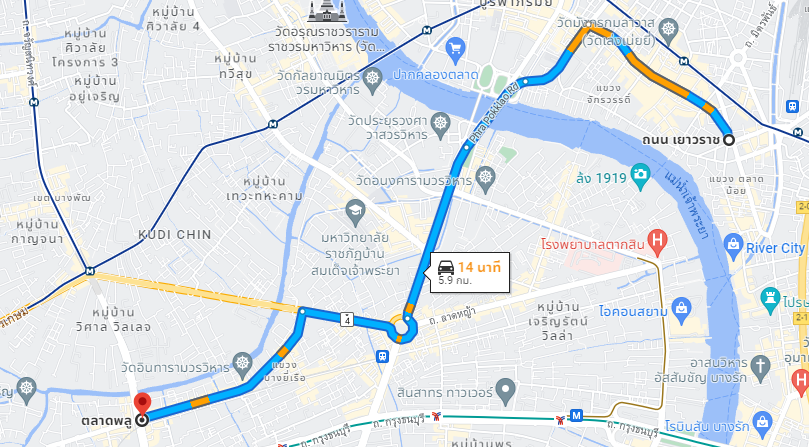
Nao: The reason why you should go to Taladpur is because it is the place to eat the most famous and delicious guichai in Thailand. The original method has been passed down from generation to generation, and it is a delicious food not only for Thai people but also for foreigners who come to Thailand.
Daisuke: Guichai! Chives buns wrapped in a chewy rice flour skin. Actually, chives are called guichai in Thai, and this dish is officially called kanom guichai, but usually when people think of guichai, Thai people think of this dish, right?
[Guichai]
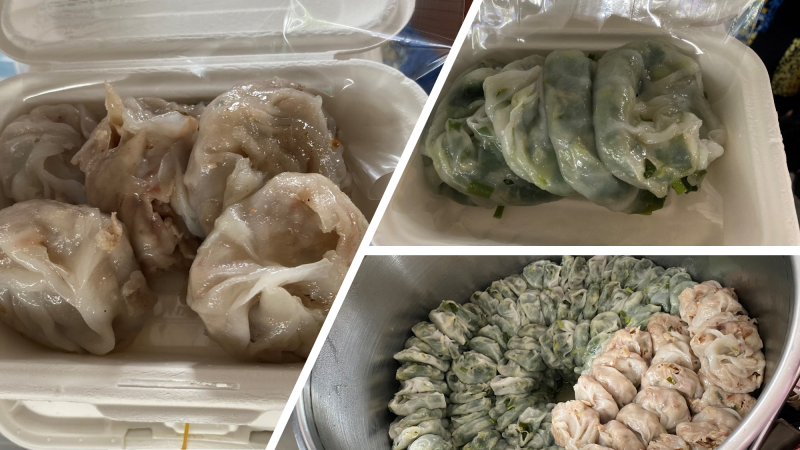
Daisuke: Wow. So you were seriously pursuing a delicious taste even for the offerings used during festivals. By the way, which restaurant is the best place to eat guichai?
【Restaurant known for Guichai】
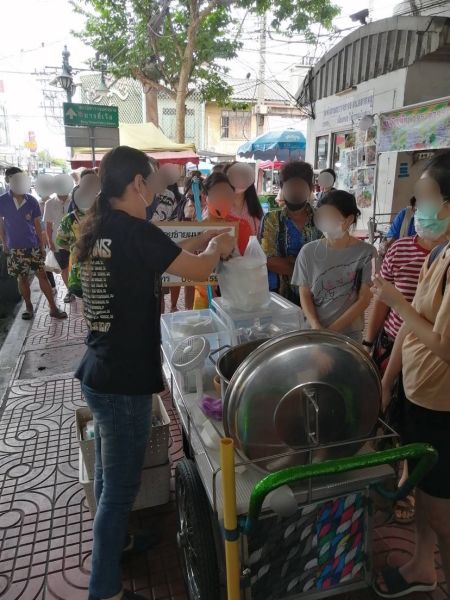
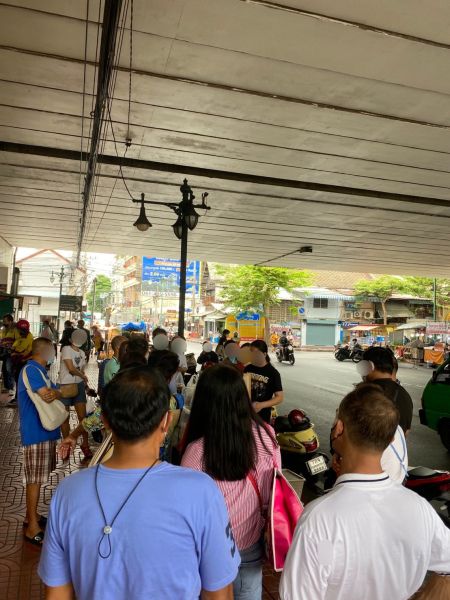
[Popular Ka Ou Moo Dane]
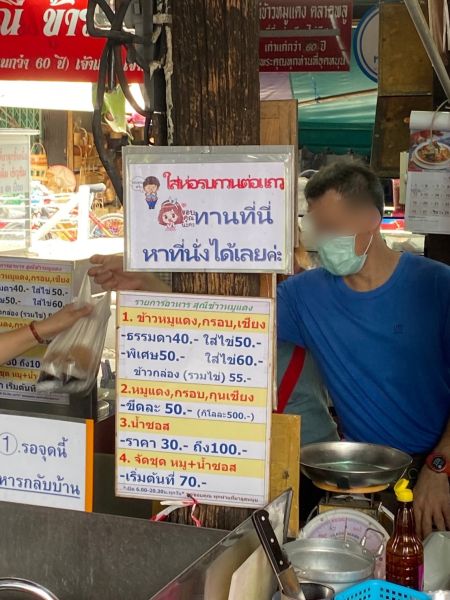
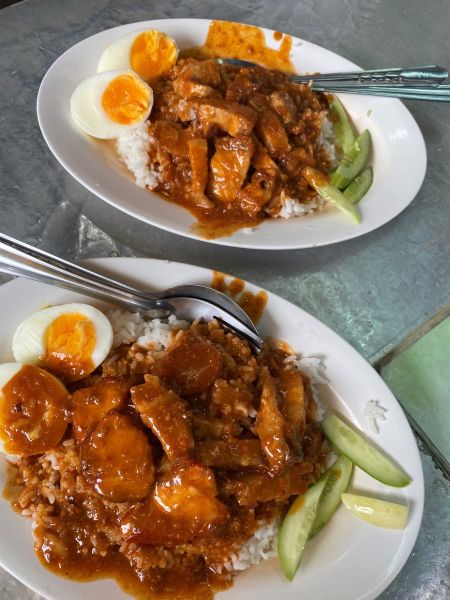
[Restaurant: Sneak-O-Moo Daeng]
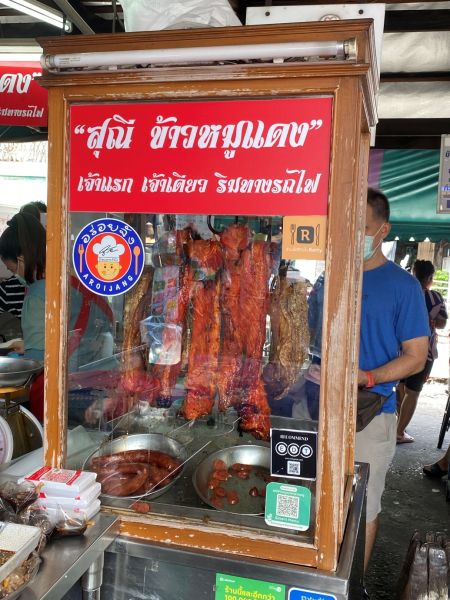
Daisuke: I see. I see. So you are using that standard for food that has already been heated and eaten heated. I can imagine that the texture of moutote (fried pork belly), which is popular even outside of this restaurant, would deteriorate if it is refrigerated. I now have a better understanding of the sense of temperature control of food products. If it is a popular restaurant, the product turnover is good and you may not have to worry so much about food damage. Incidentally, recently I've been seeing stores that keep the food for display and for use separately, for example, if you look closely at the meat in the showcase, you'll see that it is imitation.
Nao: After guichai and khao moo daeng comes dessert.
Daisuke: Thai desserts are unique and there are many varieties. But this picture looks like rice with egg. Is this a dessert?
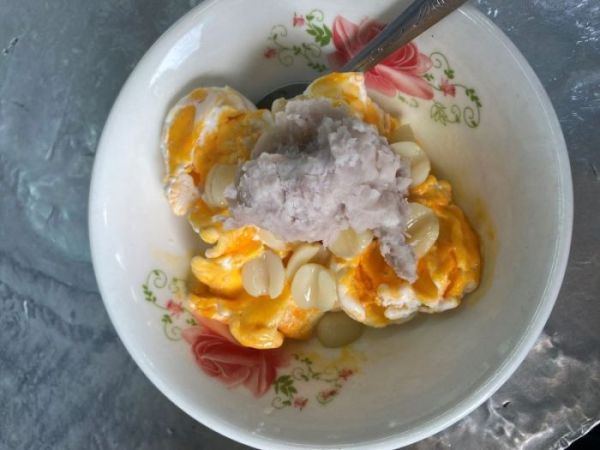
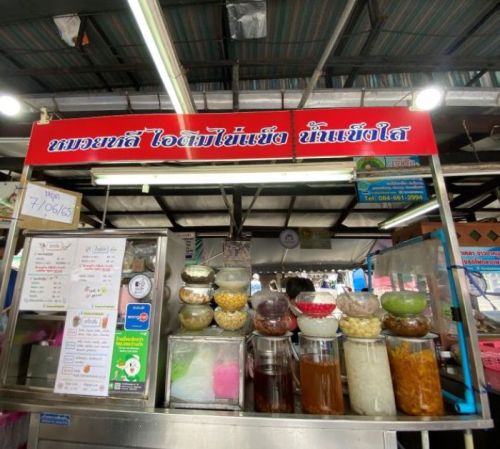
Daisuke: I have never heard of coconut ice cream with egg. I'm a little bit resistant to it visually, but I'll give it a try next time. I was also a bit intimidated by the mango and sticky rice when I first tasted it, but this is really delicious. A famous rapper ate this on stage at an American music festival, and it became a popular dessert among Thai people.
Nao: By the way, in Thailand, bananas can be boiled, dried, baked, fried, and prepared in many different ways for dessert. Thai people eat bananas raw, of course, but they also like to eat them with coconut milk or special sweet sauces. It is especially hard to find a restaurant that serves a delicious dessert of sweet and soft bananas and coconut milk, as shown in the photo below, so please give it a try when you come to Taladpur.
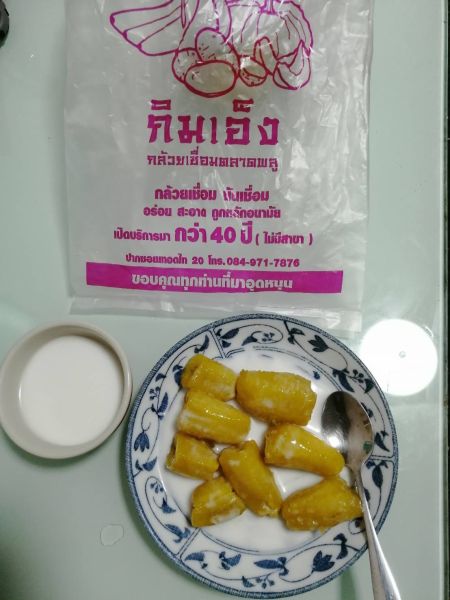
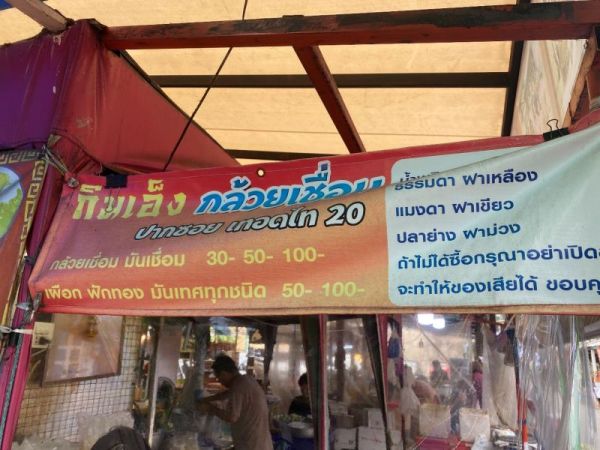
Nao: Speaking of Thailand, temples are important cultural spots, and there are many other places of interest besides famous temples. If you go to Taradpur, I recommend these two temples. One is Wat Khun Chan and the other is Wat Intharam Worawihan.
Daisuke: It's a bit hard to remember the name in one go. Watt means "temple. What are the features of each temple?
Nao: Wat Kuen Chan features a beautiful and unique architectural design that blends Thai and Myanmar cultures, and is an old temple with a long history, built about 200 years ago.
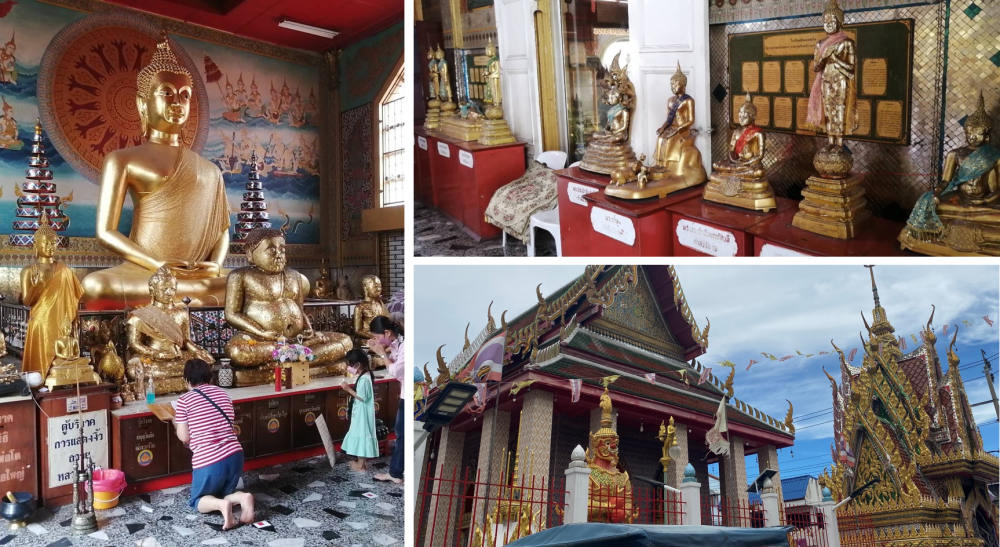
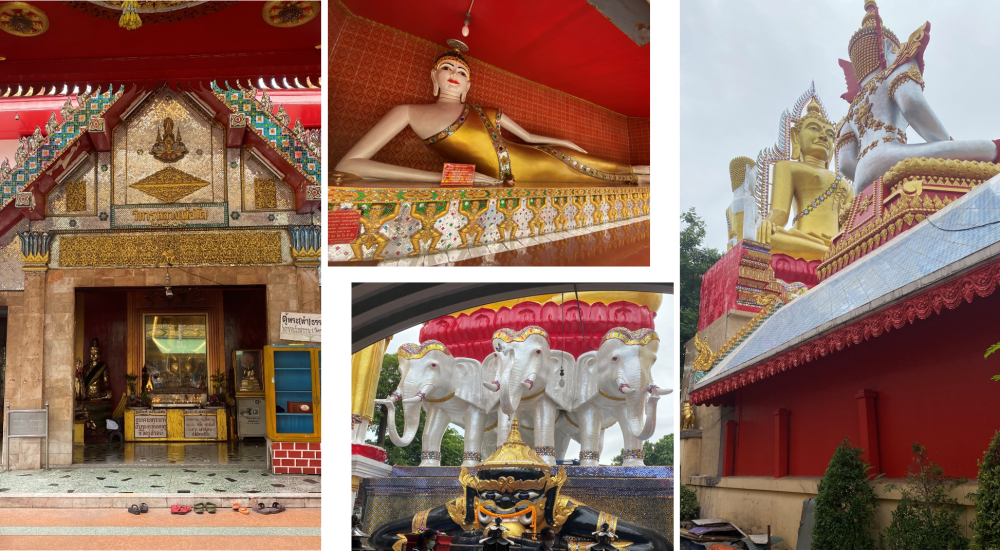
Nao: The other one, Wat Intharam Worawihan, is a historical temple built during the Ayutthaya period. It has a slightly different atmosphere from the temple we just visited. Note that you can only visit this temple on Saturdays and Sundays. The temple staff and volunteers will guide you around.
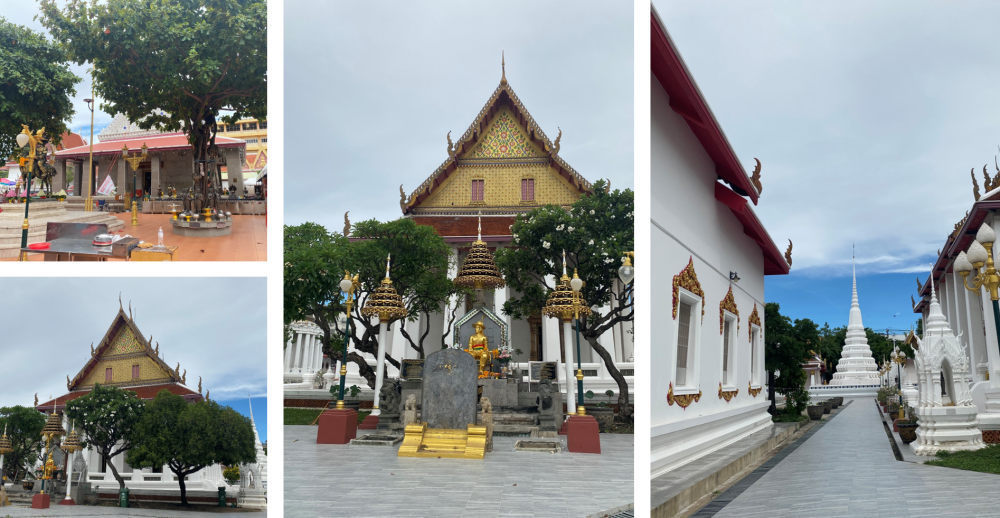
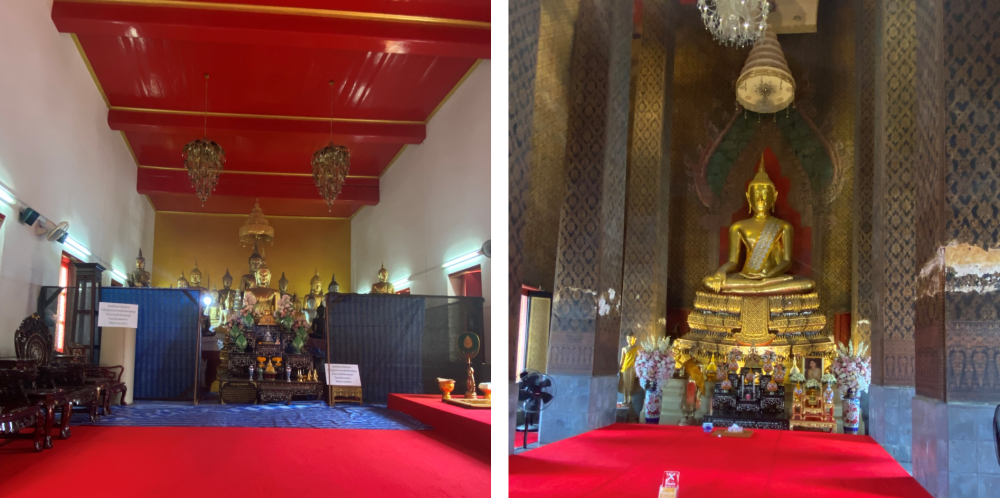
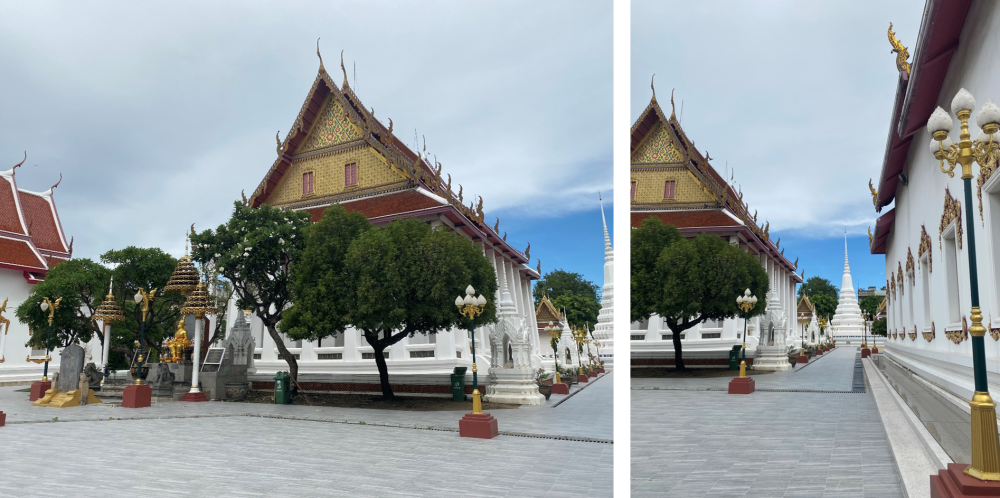
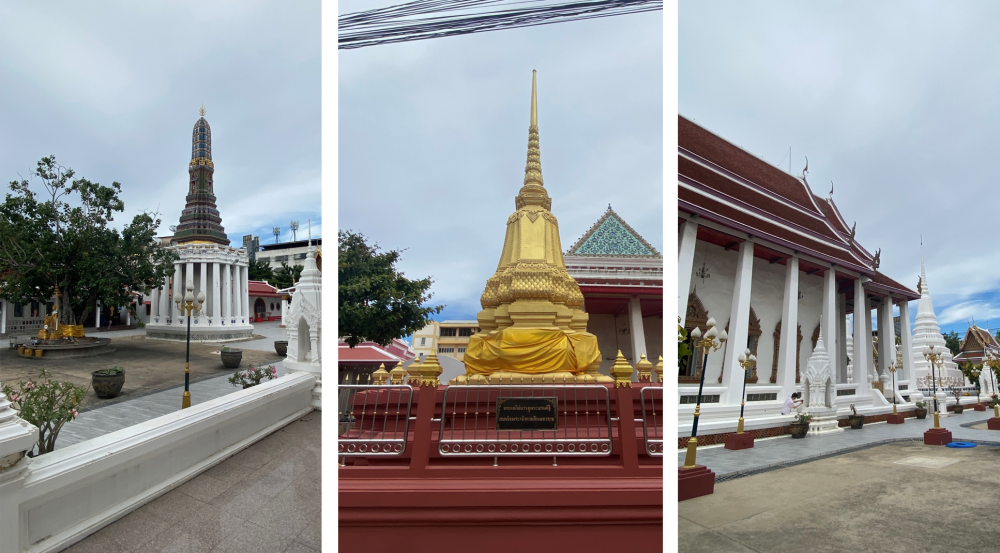
Nao: For Thai people, temples are places that are closely related to their daily lives. The custom of Thai people often going to temples has been cultivated since childhood. Also, Thailand is a country with many religious festivals. At every festival, people go to pay their respects to the monks at the temples. Most Thais follow Buddhism. When life is not going well, they go to temples to feel savaii. At temples, people pray, make offerings, and donate food and other things to the monks. Even if there is no big festival, people go to temples on Buddhist holy days and on ordinary days.
Today, however, young people are not as interested in temples as they used to be. Temples and religion are becoming more and more distant from people's lives, so the way people relate to temples may gradually change in the future.
Daisuke: Besides doing something directly to the monks, they also release live fish into the pond to make merit. I think what I feel most when I live in Thailand is the close relationship between Thai people and Buddhism.
Come to think of it, when there was a lot of unrest among people in Corona, a couple of monks talking about Buddha's teachings on You Tube like comedians became very popular.
Nao: Digital marketing has been popular in Thailand for the past four to five years. Tourist attractions, restaurants, and various educational materials are often posted online. Anyone can easily access and get information easily.
There are other restaurants, like the Guichai restaurant I mentioned, that are becoming more and more popular as information is shared online. In addition to the taste itself, it is also important to go to the restaurant and taste the experience of eating there. Digital marketing is necessary for consumers to become known to the public by coming to the restaurant and tasting the food. Guichay stores have become famous through social media trend rankings. Products are gimmicky in that you have to wait in very long lines to get them. Most important is multimedia, with photos and videos being posted on various social media outlets such as YouTube, Instagram, and Facebook. Not only famous stores, but also various temples are posting information on YouTube and other social networking sites.
Young people these days do not go to temples like people in the past. Therefore, more content about monks and temples will make it easier for young people to access information. Some monks give sermons and lectures online. This will encourage more people to go to those temples. The more people going to the temple, the better the economy of the temple and the stores around the temple.
Daisuke: I see. From ordinary consumers to monks, posting and sharing videos is very popular among Thai people. It seems that it is very important to have videos that touch the heartstrings of Thai people, both for those who create topics and those who are being created.
Nao: In my opinion, Japan is becoming more content about digital marketing. However, perhaps because Japanese people are very privacy-conscious, sharing information via YouTube is not that popular.
In Thailand, no one cares much about it, but it might be a little difficult in Japan except for You Tubers to shoot videos inside restaurants and other stores and post them on You Tube. But You Tube is an essential tool for digital marketing in Thailand.
Daisuke: I think I'll make a You Tube channel about life in Thailand.
Nao: Yes, that's right. But. first of all, I think you're too hungry! Sawadhikar!
-

Author profile
Nawarat Thongnuaim
A young researcher in charge of Japanese clients at Intage Thailand. She is a forward-looking type who boldly takes on any challenge. She is a sucker for good food.
-

Editor profile
Daisuke Aoba
Male researcher in his 40s, living in Thailand.He has visited more than 30 countries in the past.He seeks the best for consumers in each country and always tries to match his own feelings with those of the consumers.
He is also eagerly continuing to post his own world gourmet posts, mainly on Thailand, which are viewed approximately 1,000 times a day.
 Global Market Surfer
Global Market Surfer CLP
CLP